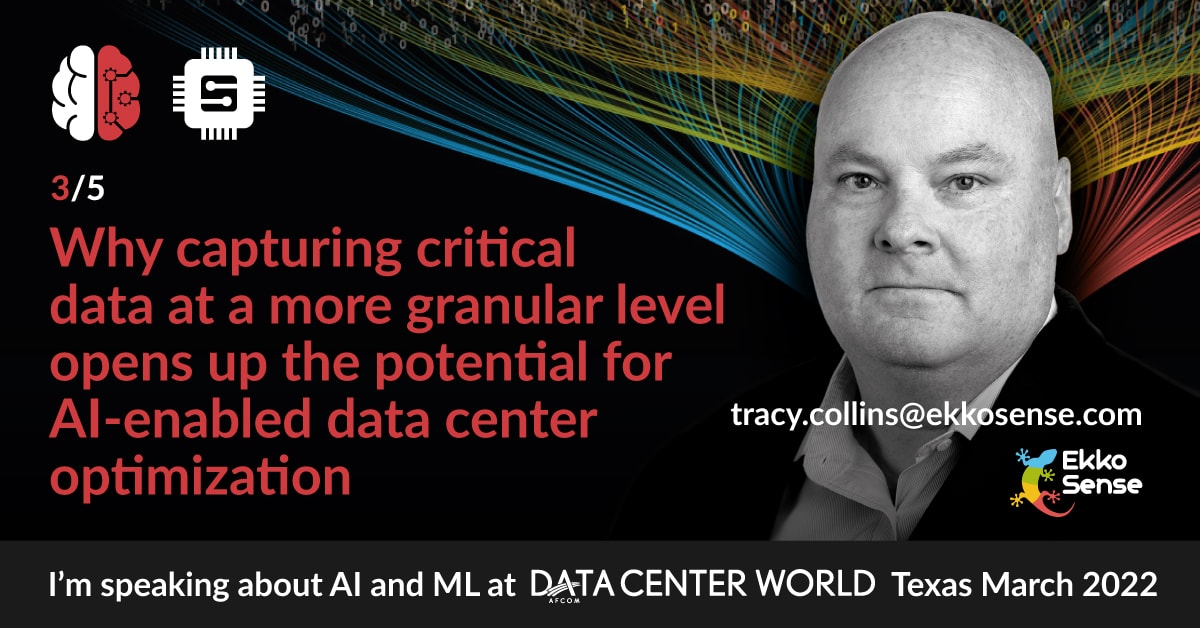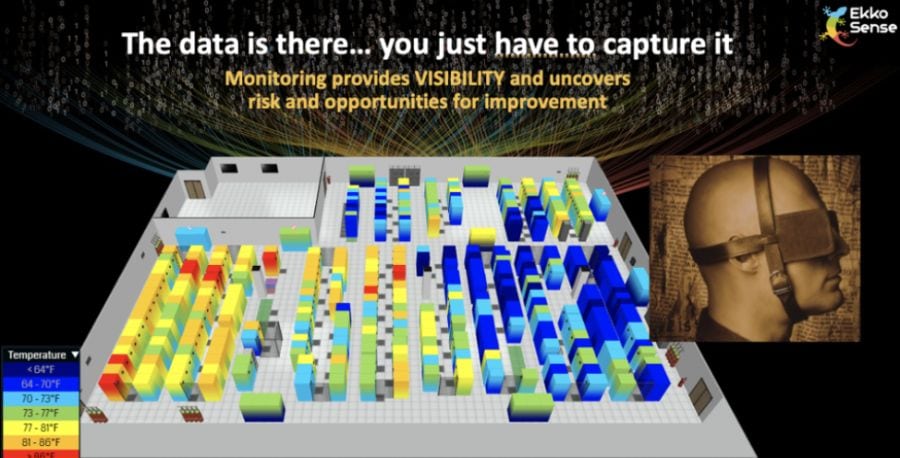Why capturing critical data at a more granular level opens up the potential for AI data center optimization

The only reliable way for data center teams to troubleshoot and optimize data center performance is to gather massive amounts of data from right across the facility – with no sampling. This removes the risk of visibility gaps, but also introduces a new challenge in terms of the sheer volume of real-time data that is being collected.
ASHRAE still only advocates measuring just one out of every three racks. While this will lower the monitoring hardware costs, it introduces risks. Assuming that close proximity ensures that you have a directly-correlated relationship between different racks does is unwise. Each rack is a contained thermal environment, and as such, each has its own thermal reality.
That’s why we believe that for true cooling optimization it’s essential to monitor and report temperature and cooling loads much more granularly. To achieve this probably requires around 10x more sensors than are currently deployed in today’s typical data center. Indeed, EkkoSense’s own research suggests that just one in 20 M&E teams currently monitor and report actively on an individual rack-by-rack basis – and even less collect real-time cooling duty information.
The good news is that all the data is there – you just need to capture it. However, traditional data gathering cost models have always made this an expensive exercise. That’s why at EkkoSense we’ve focused on disrupting this process using ultra-low-cost Internet of Things wireless sensors that allow sensors to be deployed in much higher numbers across the data center. More sensors ensure much higher spatial resolution – right down to the rack level.

A data center operator with 1,000 racks might feel that spending $100,000 on sensors is a lot of money – but look at it instead as a capital investment to protect your IT assets (that collectively could represent a capital investment of tens of millions of dollars) against potential thermal issues and it quickly seems like a smart choice. By putting sensors on every rack, you can not only better optimize your environment, but you can also ensure that you are alerted when a threshold is breached allowing for quick response. Suddenly, the blinders can come off.
At EkkoSense we talk with our clients about how it’s time for data center monitoring to start getting much more granular – but what do we mean by that? And how granular do you need to be? The average data center we instrument will produce over 100,000 data points a day that are captured, interrogated, and correlated by the software. And with more and more monitoring data collected every day, we will have collected over 30 billion data points within the next year – translating directly into more reliable, higher quality data center optimization performance for our customers.
At EkkoSense we know that it’s only when you combine this level of granular data with machine learning software that you can start to track operational performance in real-time. True AI-powered optimization requires a proven, safe process that’s based on thousands of real-time sensors and expert spatial models that combine to remove the uncertainty from optimization and provide all the critical machine learning data to power risk reduction and efficiency initiatives – effectively changing the game for data center operators.
In the next post I’ll examine how the latest 3D visualization and AI-powered analytics makes it so much easier for data center teams to remove the uncertainty from optimization – effectively changing the game for data center operators.
This is the third in my series of articles on AI. Catch up with the previous two articles ‘How AI and Machine Learning are set to change the game for data center operations’ and ‘The current state of data center optimization – why most operators are still in the dark’.
My next piece will be titled ‘How 3D visualization and AI-powered analytics makes it so much easier for data center teams to support instant optimization decisions’. In the meantime, please download EkkoSense’s machine learning and AI white paper here or get in touch for a free demonstration of the power of EkkoSoft Critical AI.
My next piece will be titled ‘How 3D visualization and AI-powered analytics makes it so much easier for data center teams to support instant optimization decisions’. In the meantime, please download EkkoSense’s machine learning and AI white paper here or get in touch for a free demonstration of the power of EkkoSoft Critical AI.